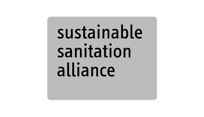Public litter storage helps prevent the uncontrolled scattering of waste in public areas, especially in places with high levels of waste generation such as markets. A dense network of bins on streets and other public grounds fills the gap left by household and communal storage.

Public litter storage is used to dispose of waste generated by individuals in public areas. It complements household S.1 and communal S.2 storage systems. To collect and manage waste in public areas, a dense network of public litter bins is required, especially in and around markets and in parks. In residential areas, the density of the public litter bin network can be lower. Public litter bins may have similar or larger storage volumes to household bins but are much smaller than communal storage facilities. A dense network of bins provides frequent and convenient places to deposit waste near the generation of waste. Public litter bins are commonly managed along with the cleaning and sweeping of public spaces and streets.
Design Considerations
Public litter bins must be designed for convenient use by waste generators and safe and fast emptying for operators. The bin itself must contain waste safely and prevent access to animals. The bins must be frequently and systematically located, easy to find visually and clearly distinguishable from other infrastructure such as mailboxes. Public bins should not be easier to access than communal storage in residential areas and should not be used for household waste. A cover on public litter bins helps keep animals out and protects against rain. Safe and fast emptying can be facilitated by removable inner casings, or by pivotable bins which can be tipped during emptying. Rotary pivot mechanisms should be lockable and sufficient space left below the bins to catch waste with a movable container. Bins with inner casings should be lockable to prevent removal or uncontrolled emptying. Using plastic bags instead of inner casings is not recommended in humanitarian settings as high-quality bags are required to carry the weight of waste.
Materials
Public litter bins are ideally made of durable materials, such as plastics or galvanised steel, and resistant to the potentially liquid and corrosive nature of waste. For plastics, UV resistance must be considered. Steel bins have the advantage of being heat and fire-resistant. Repurposed vessels, such as plastic containers or cleaned oil drums, can also be used and customised for waste storage. Strong bins reduce the risk of destruction or vandalism but are commonly heavier and more expensive. Theft and vandalism can also be prevented by attaching bins to existing walls and buildings.
Applicability
Due to their large number and the corresponding effort required for installation, maintenance and emptying, public litter bins are not recommended during or shortly after emergencies. During these phases, larger, movable containers located in public areas are more likely to be suitable S.2. Communities need to be sensitised and motivated X.6 to use public litter bins, which makes their use more appropriate in protracted or development settings. Public litter bins can be installed in rural and urban settings but may be more relevant in urban settings given the higher population. The density of urban public litter bins also facilitates their operation because of shorter travelling distances for collection and maintenance.
Operation and Maintenance
Public litter bins are commonly operated, emptied and maintained by waste workers engaged in street cleaning and sweeping. Maintenance is essential to keep bins clean and usable and to repair damage caused by vandalism, corrosion or fires. Regular emptying prevents bins from overflowing and attracting animals and ensures their convenient and safe usage. In hot and humid climates, litter bins should be emptied at least every second day, if not daily, as organic waste rapidly degrades and smells. More frequent emptying is also required in areas of increased waste generation, such as in or around markets. Community sensitisation is usually needed to facilitate the use of the bins X.6.
Health and Safety
Public litter storage must enable convenient and safe waste depositing. The attraction and presence of wild animals, and disease vectors in particular, must be prevented. The ingress of rain or loss of waste by wind can be prevented with lids or horizontal openings. As the release of leachate must also be prevented, holes in the bottom of bins or bins made of wire mesh are unsuitable. Regular occupational health and safety X.4 measures are needed for operators.
Costs
The cost of public litter storage depends on whether industrially fabricated or locally produced equipment is used, or whether available containers are repurposed and customised for storage. Cost also depends on the bins’ materials and auxiliary structure (e.g. for tipping bins). Overall costs must include the total number of bins, emptying frequency, spare parts, travelling distances and the workforce required for operation, maintenance and repair. In some settings, company advertisements placed on bins or branded bins provided by companies can reduce costs.
Social Considerations
The public’s active use of public litter storage is key to its success. Sensitisation about the risks of scattered waste is usually required X.6. As a public service, the bins might not be seen as belonging to the community and its members, so the level of effort and interest in keeping them clean might be limited. The practice of littering might be averted by keeping public areas clean through street sweeping and cleaning campaigns. In the absence of enforced littering regulations or related social norms, experience shows that public litter bins can be neglected by communities.
Key Decision Criteria
Input Products
Organic Waste
Organic Garden/Wood Waste
Organic Food/Kitchen Waste
Recyclables
Plastics
Paper and Cardboard
Metals
Glass
Textile
Mixed Waste
Residual Waste
Output Products
Organic Waste
Organic Garden/Wood Waste
Organic Food/Kitchen Waste
Recyclables
Plastics
Paper and Cardboard
Metals
Glass
Textile
Mixed Waste
Residual Waste
Response Phase
Application Level
Management Level
Space Required
low
Technical Complexity
low
Objectives & Key Features
Safe storage of solid waste in public areas and prevention of littering
Strength & Weakness
- Enables waste storage in public areas
- Complementary to storage efforts at the household and communal level
- Can be used to sensitise communities about waste management
- Require frequent emptying, maintenance and repair
- Active use strongly depends on community practices and social norms
Selected References
Key design features of public litter storage
UNEP (2005): Solid Waste Management, United Nations Environment Programme, Kenya






